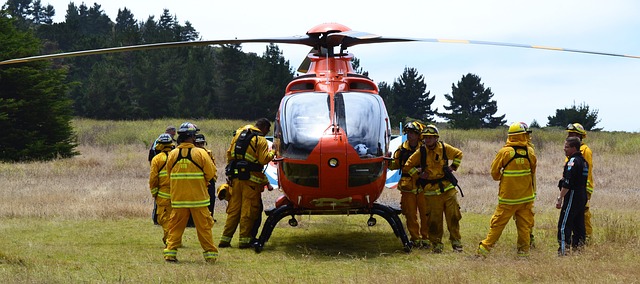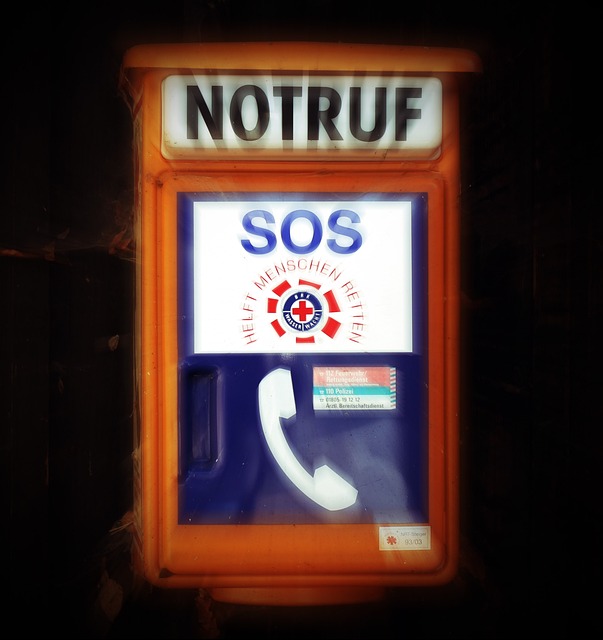When assembling flashlights for emergency preparedness, it's crucial to select models that offer high-quality construction, durability, and energy efficiency to ensure they provide reliable illumination during long-term power outages or unexpected emergencies. High lumen output is important for signaling and navigating in the dark, but should be balanced with battery runtime for optimal performance over extended periods. The best flashlights for emergency preparedness feature LED technology for better light output and energy conservation compared to traditional incandescent bulbs. Additionally, they should have adjustable brightness settings, energy-saving modes, and ideally, complementary power sources like rechargeable batteries, hand-crank, or solar panels. It's also essential to maintain spare batteries in a suitable condition, and to have a reliable charging system as part of your emergency kit. By focusing on longevity, adaptability, and energy efficiency, flashlights for emergency preparedness can effectively support sustained use under challenging conditions, providing critical lighting when it's needed most.
In the event of long-term emergencies, reliable lighting becomes a cornerstone of survival. As power grids falter and unpredictable circumstances arise, having efficient battery flashlights for emergency preparedness is not just a necessity but a safeguard against darkness. This article delves into the pivotal role of LED technology in sustaining illumination, the significance of lumens in understanding light output, and the strategic selection of battery types to maximize flashlight efficiency. From key features that define effective emergency lighting to practical strategies for extending battery life, we guide you through the essentials of building a robust flashlight kit tailored for long-term emergencies. Preparedness is paramount; enlighten yourself with the insights presented herein on ‘Flashlights For Emergency Preparedness’.
- Understanding the Importance of Reliable Light Sources in Emergencies
- Key Features of Battery-Efficient Flashlights for Emergency Preparedness
- The Role of LED Technology in Long-Term Emergency Situations
- Evaluating Lumens and Light Output: What You Need to Know
- Selecting the Best Battery Types for Emergency Flashlights
- Strategies for Maximizing Battery Life in Flashlights During Emergencies
- Essential Considerations When Building a Flashlight Kit for Long-Term Emergencies
Understanding the Importance of Reliable Light Sources in Emergencies

When emergencies strike, whether it’s a natural disaster, power outage, or other unforeseen events, reliable light sources become invaluable. Flashlights for emergency preparedness are critical tools for navigating through darkness, ensuring safety and maintaining normalcy during uncertain times. Their portability and ease of use make them indispensable in scenarios where every second counts. In the event of a prolonged power outage, a battery-efficient light can illuminate pathways, aid in searching for essential items, or provide visibility for critical tasks like first aid or repair work. The importance of these lights extends beyond their basic function; they offer peace of mind, knowing that one has a dependable means of lighting in the absence of electricity. Selecting flashlights designed with energy efficiency in mind is crucial, as they prolong operational use and reduce the frequency of battery replacements or recharging, which can be particularly important during extended emergencies. High-quality flashlights for emergency preparedness are not just a precautionary measure; they are a key component in an effective emergency kit, enhancing one’s ability to respond effectively when every aspect of preparedness counts.
Key Features of Battery-Efficient Flashlights for Emergency Preparedness

When preparing for long-term emergencies, having reliable lighting sources is crucial. Battery-efficient flashlights are essential tools for emergency preparedness, offering a balance between durability and longevity. These flashlights are designed with high-efficiency LED technology that provides ample light while minimizing power consumption. A key feature of these flashlights is their ability to offer multiple brightness settings, allowing users to conserve battery life by using lower lumens when full illumination isn’t necessary. Additionally, many come equipped with energy-saving modes, such as strobe or SOS settings, which can extend battery life even further during critical situations.
Another significant aspect of battery-efficient flashlights for emergency preparedness is their robust construction and impact resistance. They are typically built with high-strength materials like aircraft-grade aluminum, ensuring that the flashlight can withstand harsh environments and accidental drops. Furthermore, they often feature a secure twist or click mechanism to prevent accidental activation, preserving battery charge when it’s most needed. Their compact size also makes them easy to store and carry in a variety of emergency kits, bags, or even on your person. With features like weatherproof sealing and impact resistance, these flashlights are reliable companions for anyone looking to maintain visibility during unexpected events or prolonged power outages.
The Role of LED Technology in Long-Term Emergency Situations

LED technology has revolutionized the way we illuminate our environments, offering a significantly more energy-efficient and durable solution compared to traditional incandescent bulbs. In long-term emergency situations where power outages can last for days or even weeks, flashlights for emergency preparedness equipped with LED technology become indispensable tools. These devices not only provide bright, focused beams but also boast a remarkable lifespan, often lasting up to 100,000 hours, which means they can operate for years on end without needing replacement. The low power consumption of LED flashlights ensures that the batteries, a critical resource in an emergency, are preserved for longer periods. This longevity and efficiency are particularly advantageous when every watt saved contributes to the overall sustainability of one’s preparedness kit. Moreover, the robust nature of LED lights makes them less susceptible to damage from rough handling, which is often a concern during emergencies. Their compact size also allows for easier storage and portability, enabling individuals to keep a reliable light source readily available for unexpected events. In summary, LED technology in flashlights for emergency preparedness offers a practical, durable, and energy-efficient solution that enhances one’s ability to navigate and cope with prolonged power outages or other emergencies.
Evaluating Lumens and Light Output: What You Need to Know

When preparing for long-term emergencies, having a reliable source of light is crucial for safety and functionality. Flashlights for emergency preparedness must be evaluated based on their lumens output and not solely on their battery efficiency. Lumens measure the total amount of light produced by a light source, which directly impacts how well you can see in darkness or dim conditions. A flashlight with a high lumen value can illuminate a large area and is ideal for signaling or navigating unfamiliar terrain. However, for extended emergencies, battery conservation becomes a significant concern. Therefore, it’s important to balance the need for a powerful light with the efficiency of the flashlight’s battery consumption.
Selecting a flashlight with adjustable brightness settings can offer both high and low lumen outputs, allowing users to extend battery life during prolonged outages by using lower intensities when full illumination isn’t necessary. Additionally, LED technology has advanced significantly, providing brighter, more energy-efficient options than ever before. When considering a flashlight for emergency preparedness, one should focus on the lumen output in relation to battery runtime, ensuring that the light produced is sufficient for the intended use without unnecessarily draining batteries. This balance ensures that users are equipped with a versatile tool that can adapt to various emergency situations while maintaining operational readiness over an extended period.
Selecting the Best Battery Types for Emergency Flashlights

When preparing for long-term emergencies, selecting the best battery types for your emergency flashlights is crucial to ensure reliability and longevity during unforeseen events. Lithium-ion and lithium-polymer batteries are often the preferred choices for high-quality emergency flashlights due to their energy density and ability to hold a charge for extended periods. These batteries provide a significantly brighter light than traditional alkaline or NiMH batteries, which is essential when visibility could mean the difference between safety and peril. Additionally, lithium batteries have a longer shelf life, maintaining up to 70% of their charge after five years, making them ideal for sitting in your emergency kit waiting for use.
For those who prioritize flashlights for emergency preparedness, it’s important to consider the type of emergencies you might face and the conditions under which your flashlight may operate. For instance, if you’re preparing for a power outage in your home, a flashlight with high-drain rechargeable lithium batteries would be suitable. In contrast, for an outdoor emergency where weight and space are at a premium, consider flashlights with replaceable lithium batteries to ensure that you can replace the power source without needing to replace the entire light. Always check for flashlights that feature battery level indicators to avoid unexpected darkness during critical moments. Proper maintenance and storage of these batteries, as per manufacturer guidelines, will further extend their lifespan and reliability when you need them most.
Strategies for Maximizing Battery Life in Flashlights During Emergencies

During emergencies, reliable lighting can be a matter of safety and survival. To ensure flashlights for emergency preparedness remain operational when needed most, it’s crucial to implement strategies that maximize battery life. Firstly, selecting flashlights with high-efficiency LED technology can significantly extend their battery life compared to older models with incandescent bulbs. Additionally, using the lowest necessary light output conserves power without compromising visibility. Users should familiarize themselves with the various brightness settings on their flashlights and adjust them according to the task at hand or ambient lighting conditions.
Furthermore, maintaining and handling flashlights properly can prevent unnecessary battery drain. Regularly checking and cleaning the contacts ensures a solid connection, while storing batteries at room temperature can help preserve their charge. It’s also advisable to keep spare batteries in a cool, dry place and replace them before they are completely depleted, as deep discharge cycles can shorten their lifespan. Investing in flashlights for emergency preparedness that feature power-saving modes or automatic shutoff mechanisms after a set period of inactivity can further extend battery life during long-term emergencies. With thoughtful usage and maintenance, these lighting tools can serve as reliable companions when unexpected events occur.
Essential Considerations When Building a Flashlight Kit for Long-Term Emergencies

When assembling a flashlight kit for long-term emergencies, durability and reliability are paramount. Flashlights for emergency preparedness must be robust enough to withstand harsh conditions and capable of operating when needed most. Opt for high-quality flashlights that feature sturdy construction, such as those made from aircraft-grade aluminum or other hardy materials. These will endure the rigors of prolonged use and environmental factors like dust, moisture, and temperature extremes. Additionally, prioritize flashlights with high lumen outputs to ensure they can illuminate dark environments effectively. A versatile beam pattern, including a focused spot for distant objects and a diffused floodlight for wider areas, will offer greater utility.
Battery efficiency is another critical factor in emergency preparedness. Select flashlights that utilize energy-efficient LED technology, as these consume less power while providing brighter light compared to older bulb types. Rechargeable batteries with high capacity and the ability to be powered by a hand-crank or solar panel are excellent choices for sustainability. Include a few spare batteries in your kit, ensuring they are stored in a cool, dry place to maintain their charge. A charging station or the ability to recharge through alternative means should also be considered to maximize battery life throughout an extended emergency situation. By thoughtfully selecting and equipping your flashlight kit with these considerations in mind, you can ensure that your lighting needs will be met reliably during long-term emergencies.
In conclusion, reliable lighting is a critical component of emergency preparedness. The adoption of battery-efficient flashlights, particularly those harnessing LED technology, stands as a beacon of stability in unpredictable scenarios. Understanding the lumens and light output, coupled with selecting the optimal battery types for your flashlight kit, are key factors in ensuring longevity and effectiveness during long-term emergencies. By implementing strategies to maximize battery life and carefully selecting components for your emergency flashlight kit, individuals can be better prepared to face unexpected events with confidence. Investing in flashlights designed for emergency preparedness is a prudent step towards safeguarding oneself and one’s loved ones in the darkest of times.
